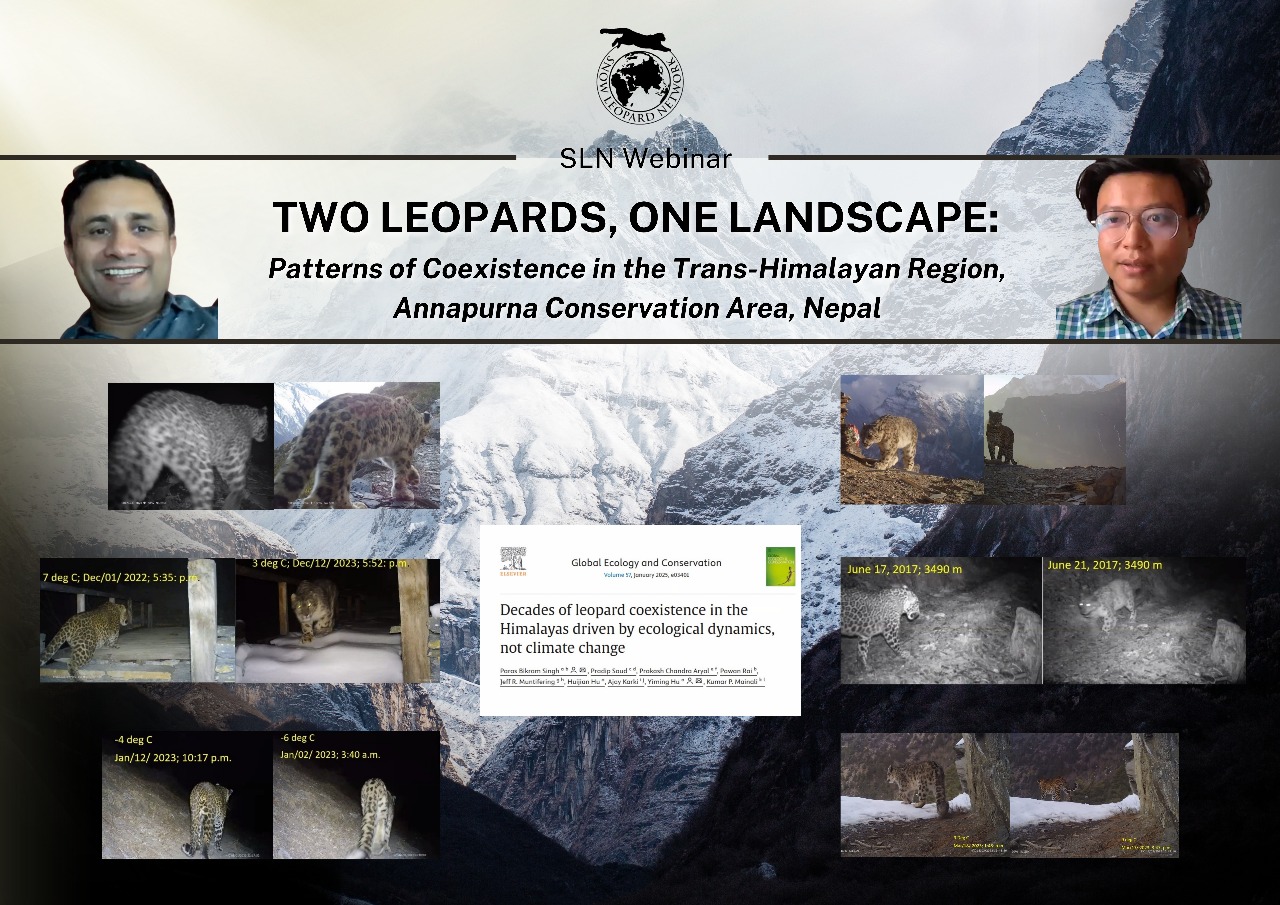SLN invites you to this webinar presentation that delves into the ecological coexistence of two apex predators—the snow leopard (Panthera uncia) and the common leopard (Panthera pardus)—within the trans-Himalayan region of Nepal. Drawing from a combination of historical accounts dating back to the 1950s and extensive winter camera trap data collected between 2016 and 2023 in the Annapurna Conservation Area (elevations 3,100–4,696 m), the study challenges conventional assumptions about the recent appearance of common leopards at high altitudes being solely a result of climate change.
Instead, the findings reveal a long-standing adaptation of common leopards to high-altitude environments, including successful foraging and breeding in extreme winter conditions with temperatures as low as -18°C. Spatial analysis indicates that the likelihood of species co-occurrence increases in areas near open forest canopies and farmland, and decreases with proximity to snowline and steeper terrain—underscoring the snow leopard’s affinity for rugged landscapes.
By examining spatial, temporal, and ecological interactions, this presentation provides a deeper understanding of the factors enabling the coexistence of these two charismatic felids and offers valuable guidance for future conservation planning in the high Himalayas.

